Vintage Bargains, The Les Paul Deluxe
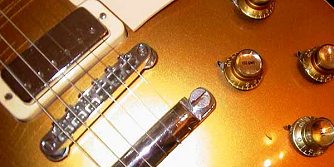
Until a few years ago Les Paul Deluxes were regarded as cheap, utility only, generic Les Pauls. Nothing special, just workhorses. Then the early Goldtop versions started to catch on with collectors. The rest of them, however, still fall into the vintage yet affordable, underrated classic bracket. You love them or hate them, especially the pick-ups. I fall into the former category (although a Custom is still my weapon of choice). Billy Duffy often harangues me about what I see in them, clearly falling into the latter. Rick at New Kings Road Vintage Guitar Emporium tells me both Noel Gallager and the guitarist from Travis have recently bought Deluxes from him.
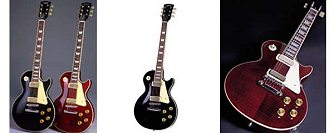
It’s the mini-humbuckers that set Deluxes apart from regular Les Paul Standard models. Both models, otherwise, share identical trim, apart from the Deluxe or Standard insignia on the truss rod cover. These pick-ups are brighter with less middle than a regular humbucker and slightly less gain. An ordinary humbucker sounds “rounder” where a mini-humbucker sounds “sharper”. The differences are more discernible when undistorted at low volume, back to back through a Marshall on 11 it’s hard to tell the difference.
I would arrange Deluxes into three periods:
The first is 68 - 69 when the very first ones were manufactured. The Les Paul Standard was reintroduced by Gibson after an eight year hiatus in 68 as a Goldtop with P90’s. At this point it still featured the narrow headstock like the ’50’s Les Pauls. The earliest of these Standards also have a one piece neck , unlike the three piece laminates which are most usually seen on ’70’s Les Pauls and many connoisseurs suggest that these are left over fifties necks that were utilized on the new model. It’s also well documented that it’s easy to tell the original fifties guitars from the sixties counterpart by the depth of the binding in the cutaway, which is supposed to be thicker on the ‘68 re-issue, whereas it maintains a uniform depth on the original 1950’s example. But I’ve definitely seen uniform depth binding on late sixties guitars. It has also been argued that these are left over fifties bodies. Maybe. It’s uncertain as to why Gibson decided, about a year later, to fit the Epiphone developed mini-humbuckers to the reintroduced Standard, but they did and the Les Paul Deluxe was born.
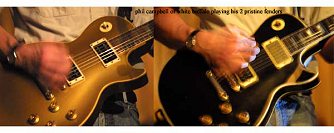
One theory is that Gibson wanted to use up surplus stocks of mini-humbuckers it acquired when it bought the Epiphone Company in the early 60’s. The first Deluxes had a single piece mahogany, non-sandwich body construction, identical to the P.90 guitars. The route for a mini-humbucker is identical to that of a P.90 and many people have swapped and changed the pick-ups around on these guitars, so beware of slightly later Deluxes being passed of as 68 Standards after having their mini-humbuckers substituted with P.90’s. The original 68 Standard with the P.90 pick-ups is worth more money than the equivalent Deluxe. The solder joints give it away, look for evidence of rewiring in the control cavity in the back of the body. About half way through 69 the two piece sandwich body was introduced followed in early 1970 by the neck volute and a few months later the “Made In U.S.A.” stamp on the back of the headstock (in line with all Gibson models) although during this transition period there are also guitars with the “Made In USA” stamp but no volute and vice versa.
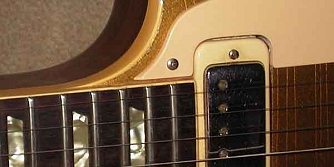
The earlier the version the more it’s worth, with single piece body versions approaching the two grand mark. In fact my first ever Les Paul, and the only guitar I’ve ever had stolen (touch wood), back in 1977, was a very early Goldtop Deluxe with a one piece body. Although its surely been painted a different colour by now I still keep half an eye out for it!
The second is 1970-75. During this period Gibson introduced a variety of finishes and maintained the mahogany neck and Kluson tuners with the double ring tulip buttons. It’s the guitars from this period that I reckon are vintage bargains, especially the cherry sunburst ones, just like the one Scott Gorham used to use in Thin Lizzy, which have yet to catch on as the goldtops have. The wood used and colour of the Sunburst finish varies enormously from this period. Some have very distinctive grain, some have too much red in the sunburst. A small number actually boast “flamey” tops. Some are wonderfully pretty others simply aren’t.
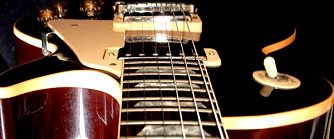
The Sunburst guitars also feature sunburst backs, sides and necks! Normally the tops are three piece maple but I’ve seen four and even five piece tops. Other colours introduced from 72-5 were tobacco sunburst, wine red, black, natural and the rare and very pretty genuine cherry finish more usually found on Gibson’s semi’s like the ES335. Around 74-5 the rare blue and red sparkle tops were made, obviously with Glam Rock in mind. I’ve seen gold sparkle too purported to be genuine, but I’m not convinced. The sparkle top models are worth considerably more than Deluxes with other finishes and can command prices above two thousand pounds. I’ve also heard rumour of purple and green sparkle, but I’ve never come across an example. Some interesting, though arbitrary, features came and vanished again at this time too, such as the “goofer” pick-up surrounds in 72-3 and the Gibson embossed pick-up covers circa 72.
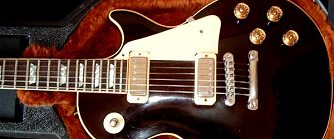
It is very hard to date all Gibsons from this period by the serial numbers because there is no chronology. For example, numbers in the 100,000 range run from 1970 all the way into 1975. While numbers in the 700,000 range were utilized from ‘70 - ‘72. So one has to rely on recognizing the different specifications as they came and went. Another very useful dating tool are the pots. All American pots are date coded (no good if the pots have been changed, of course). There is a set of numbers on the pots Gibson used starting with 137 which is the code for the manufacturer - in this case CTS. But the fourth and fifth digit are the year the pot was made. So if someone is selling you a 1970 Les Paul Deluxe but the pots date from ‘74, someone’s telling porkies.
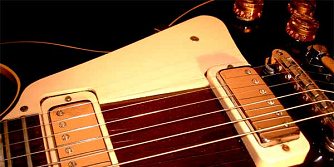
The third period is 76-81/2 when the guitar was discontinued. This version of the model was somewhat compromised by the introduction of the maple neck, which sets it apart from its superior mahogany neck predessesor. As a consequence a lot of the vintage feel of the guitar was lost, though this was countered to some degree in 78 by the reintroduction of the one piece body. The wider “Nashville” tune-o-matic bridge was also introduced on the Deluxe around the mid-1970’s as it was across the whole Gibson range. Although these bridges unquestionably work better due to the longer travel allowed for the saddles and the sturdier support posts, for my money the earlier and narrower “Kalamazoo” bridge with the saddle retaining wire is preferable, if only on aesthetics alone.
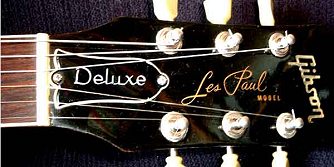
These late 70’s Deluxes are still a lot of guitar for the money and quite easy to find for between seven hundred pounds and a grand, but watch out for the “weightlifters only” heavy ones which abounded in the late ’70’s. Fender went through the same problems at the time when good quality lightweight wood such as mahogany (ash in the case of Fender) was in short supply and the guitars of both companies suffered as a result
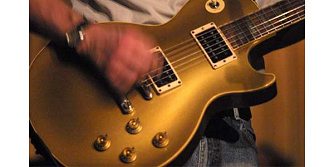
Gibson has just announced a ‘71 Goldtop reissue at the recent NAMM show. It will no doubt work out cheaper to buy a secondhand original. Perhaps now the model will gain the respect it deserves.
James Stevenson (The Alarm, Gene Love Jezebel)

|

Midlake |
LATEST GALLERY IMAGES

Funeral Talks 
Today's Gaza Victims |
|
|

